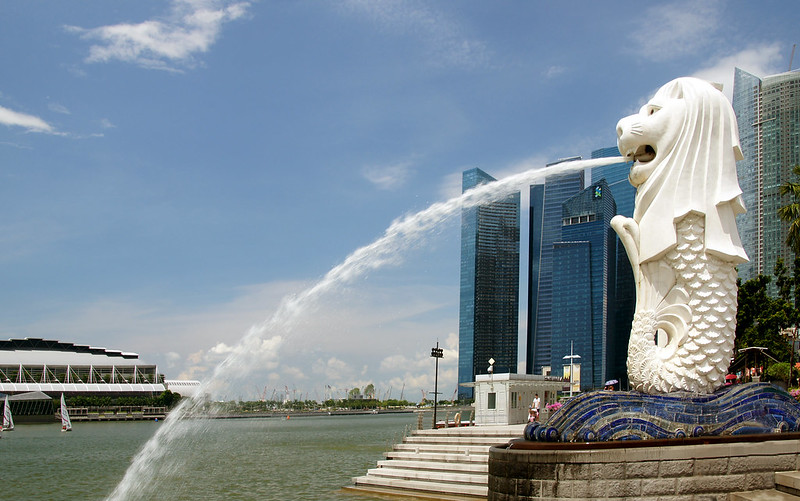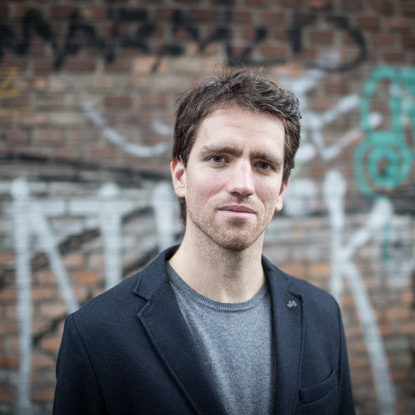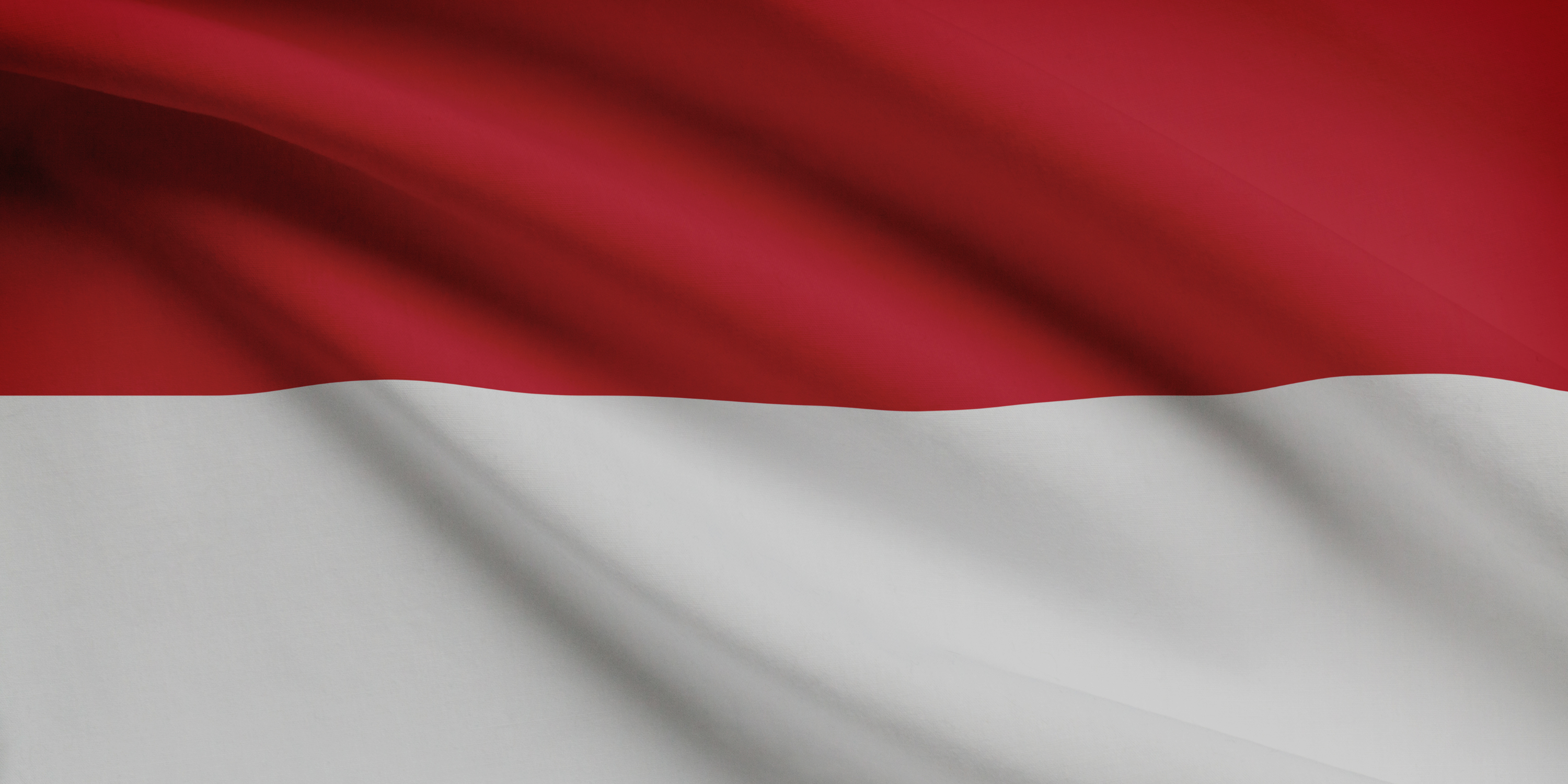“ASEAN will never completely side with China”
In his interview with CEIAS, Alan Chong (S. Rajaratnam School of International Studies, Singapore) assesses the relations of ASEAN and Singapore with China. While the Belt and Road Initiative will foster a closer exchange, he argues that political differences and distorted views of the past in China are impediments: “I have yet to hear a Chinese citizen coming out objectively saying ‘we the PRC caused trouble in Southeast Asia’ once upon a time. They have to admit it if they sincerely want to be our friends beyond pedestrian friendship.”
How does the Association of Southeast Asian Nations (ASEAN) view and react to China’s Belt and Road Initiative (BRI)?
ASEAN does not have an official position on the BRI. The closest the Southeast Asian leaders have come is their statement coming out of the 34th ASEAN Summit in Bangkok this year, where they created this document, approved without abstentions by all member states, called the “ASEAN Outlook on the Indo-Pacific”. I would interpret the title of this document to suggest that the Indo-Pacific is technically a more correct term in view of ASEAN’s broader strategic interest in trying to balance the focus on China along with its focus on the US, Japan, and India. So, this document reflects a very traditional ASEAN way of dealing with great powers in this very polarized current world order. Namely, in the sense that on the one hand, you have to admit that different ASEAN states are deeply engaged in the BRI. At the same time, they do not want China to dominate the entire political landscape. So it helps to keep in mind which ASEAN capital you are going to ask this question in.
The outlook is also remarkable for restating ASEAN’s position that the Indo-Pacific as well as the Asia-Pacific are intertwined, economically and politically and so on. It also reflects the existing regional architecture of overlapping security and economic multilateralism with ASEAN at the center. So, ASEAN centrality is still ritualized by ASEAN itself and barring any particular power saying that ASEAN is finished. ASEAN centrality continues as a default mode for regionalism, because no great power in the Asia-Pacific has today been able to find a replacement for this concept. For a brief moment, I believe two or three years ago, people were speculating that China and India can break ASEAN into rival factions, but the moment passed. China increasingly realizes that to provide cover for its activities in the South China Sea – even activities that ASEAN states individually and bilaterally dislike – they need to act via ASEAN.
Moving on to the economic sphere. The economic perspective is even more vague when we look into this document. Because it says a lot about how developments intertwine without specifying any blueprint for furthering cooperation in that regard, and if you look at the ASEAN states’ bilateral deals with China under the BRI frame, they go even deeper and are more extensive, depending on which country you look at.
Why did the moment pass that China or the US could have split ASEAN? Was it due to ASEAN’s reaction to this threat or more owned to the international dynamics in the region?
There was a moment when tensions in the South China Sea increased and the fact that China was coming out with the BRI, while ASEAN at the same time conveyed no vision at all other than saying that we need to stick together since we have more than 30 years of cooperation behind us. There was also this moment when it looked like Japan, South Korea, and China could set up a trilateral summit and they were finally talking to one another and reproducing an ASEAN-like regional security forum to mitigate tensions. But then these tensions between China and Japan flared up again and again. That basically derailed whatever promise the trilateral summit had. The summit was not really making progress like the ASEAN Summit had in terms of building an intra-mural security community. Of course, I am using this phrase “security community” in a loose way, not in a Karl Deutsch sense of it. Because Deutsch had a very specific definition, saying that if you are a true security community there is no need to plan earnestly for war amongst members. But ASEAN countries are still planning for a war amongst one another, it is just that the tensions for actually starting a war have been mitigated to a point that a full-scale war between any two or three ASEAN members is unthinkable at this stage. There could be border conflicts, but these do not amount to a full-scale war. So, ASEAN has actually progressed to the point where it is some kind of pseudo security community through consistent efforts of creating this tightening network of personal, institutional and other kinds of social linkages amongst its members.
ASEAN says that it wants to drive regionalism to include the wider East Asia and Indo-Pacific. The organization is actually trying to get all these other Asian states on the outer periphery to adopt parts of the ASEAN Way. But it appears that China, Japan, and South Korea do not seem to be able to get it together. Whenever I visit academics and think tanks in those countries, I get the impression that they do not know how to talk to one another, despite having a more common cultural heritage. They share the same roots in Buddhism, Daoism and Confucianism and varieties of those religions or philosophies, and yet it is so ironic that they cannot talk to one another. Yet if you look at ASEAN and its sheer cultural diversity, it should be even worse and yet we found a way to live with one another.
Right now, there is that intra-mural threat caused by the burning of the Indonesian forests. This should be a straight provocation for more quarreling in ASEAN, but you realize it has been contained within the ASEAN spirit. That ASEAN Spirit has not been openly invoked but there is something of it that can be sensed. You can try to pressure Jakarta but you do not call them too many names, because the politicians need to keep enough domestic political face, and hence political capital, to do something to fine those companies that are burning the forest. So that is the ASEAN Way or spirit of doing things. And you do not see this reproduced adequately in other parts of Asia.
How far does ASEAN’s influence reach in the Indo-Pacific region?
I think there is a good reason why in relation to the “Indo” part of the Indo-Pacific ASEAN has not actively engaged with Pakistan. India appears more sophisticated in its diplomatic strategy. New Delhi probably believes that ASEAN can provide an additional card to play against China, which is actually correct. ASEAN might make very positive noises about China’s actions or even lend it some diplomatic cover for its actions, but ASEAN will never completely side with China. So, in that sense, New Delhi has played the game correctly. This is as far as the westward extension of ASEAN interests go.
In Northeast Asia, ASEAN, because of the economic interdependence with the Koreans, Japanese, and the Chinese, is willing to be more active. And hence ASEAN plus Three came about in part as a reaction to the Asian Financial Crisis of 1997/98, because it seemed that the Northeast Asian economies suffered similarly, especially in the case of South Korea where there was a case of sister victimhood in the relation to the economies of Southeast Asia. But Japan and China both acted somewhat unilaterally, which led to the idea of ASEAN+3 to better coordinate multilaterally. We needed channels to talk about various types of security, economic coordination and so on.
How is the BRI perceived by the government, by the business people, by the citizens in Singapore? The city-state is sometimes labeled the “Third China”. Does this label influence the perceptions in Singapore?
In Singapore, the BRI is portrayed in the government-controlled local media quite positively, of course, the negative images are also aired alongside these positive portrayals. On the whole, the positive tone is justified to the public in terms of the projection of Singapore as an international hub of flows of trade, ideas, people and so on. So for “Singapore Inc.” to survive as a global economic hub, it has to work more closely with China and the BRI. In relation to what Singapore is doing, which is usually less spectacular compared to China’s big construction projects, is that we are offering soft strategies to aid China. This lies in providing financial resources for joint ventures of Chinese companies in Singapore, Southeast Asia, Central Asia, and even Africa, and also using Singapore’s financial reputation as some kind of legal and economic cover. If such a joint venture would fail, Singaporean banks and insurance companies would pay for the liquidation and so on. So that helps China because it lends credibility to the reputation of the joint ventures involved.
Then there is, of course, Singapore’s obsession with maintaining its multidimensional transportation hub status, so Singapore has ventured to volunteer itself as China’s catalyst for opening up the interior provinces and the previously underdeveloped ports in Southern China. From there the goods could be directly shipped to Singapore, and then the rest of South Asia, Europe and so on. Initiatives targeting certain inland Chinese cities will bear fruit in a very significant way over the next ten to twenty years. A risk is always there, but the Suzhou and Wuxi–Singapore industrial parks are now successful, along with the Tianjin eco-city. We see that the Chinese are interested in the soft dimension, eco-technologies, eco-urbanization. Now we have the Chongqing connectivity initiative which follows the train of all these initiatives, which sets Singapore apart from the other BRI participants as being an exceptional little country that is adding value to the Chinese endeavor.
Despite the political and diplomatic factors that hinder a tighter friendship between Singapore and China, I think that on the economic front few Singaporeans would argue with the fact that we need to go with China. It is the most significant growth locomotive at this point in time. China is a close neighbor. As much as we have our differences we must learn to live with it. The US has lost a lot under President Donald Trump, but one hope, of course, is that the 2020 presidential elections would cause a change in the White House and that we would regain Singapore’s positioning as the economic partner of choice equally between China and the US. And of course there is Japan, but Japan is taking a while to ramp up its interaction with Singapore, so Japan will always be a wild card. Whether it can actually partner with Singapore seriously on a large number of projects remains to be seen, because I think Japan technically has comparable banking capacities to Singapore, I think the Japanese want to keep a lot of the business to themselves. So that’s the difference between China and Japan in relation to Singapore.
Concerning the so-called “Third China”, have there been many attempts by the Chinese government to influence the Singaporean politics, academia or the ethnic Chinese citizens in Singapore in the past and in present times?
There have not been publicly documented attempts at influencing Singaporeans other than the period during the Cold War. During the Cold War, it was very clear that influence came through the latent admiration – though some of it was not latent, it was sincere – because it was the Cold War and all of Asia wanted liberation from any form of colonialism. So there was this latent sort of sympathy for Maoist China and the idea of revolution and sweeping away the old order. Mao’s sophisticated propaganda of the new China, devoid of feudalism and providing equal opportunities regardless of how one was born, did appeal to the Chinese diaspora in Singapore and Southeast Asia. In that sense, Chinese Communism was readily accessible.
China’s admirers in Singapore and Malaysia during that period of the 1950s and 1960s, when we were trying to obtain independence from Britain, were actually actively importing textbooks and other library materials from mainland China. Under this guise of preserving and advancing the appreciation of Chinese culture amongst the young people, Communist influence came in right through the front door. So, if you talk about influence operations during the Cold War, this was it. On top of that, the Communist practice of what they called “the open united front tactics” amongst the students from the middle school and universities used to be the target of this kind of manipulation, even at the predecessor of my current university, Nanyang Technological University (NTU). Back then NTU was simply called Nanyang University which means “South Seas” university, which has this emotional resonance when you talk to people who think in terms of this greater Chinese nation. “South Seas” refers to the fact that Chinese migrants were forced by exceptional hardship to travel south. A lot of Chinese left for the “South Seas” to settle throughout the entire Southeast Asia to search for a better life while keeping some kind of emotional and financial connection to mainland China. Therefore, the South Seas invokes some kind of sentimental feeling. Nanyang University was regarded as that part of Chinese higher education that had to be temporarily moved out of China. So, the Communists exploited that massively by encouraging the students to work to improve their mother country (China) and not Singapore. That is why, when the Singaporean and Malaysian nationalist independence movements started, this was a huge obstacle for the local nationalists to overcome. How do you get this China-oriented Chinese youth to find it in them to go along with nationalists on their Southeast Asian ground?
The propaganda they studied through the textbooks encouraged them towards Mao’s new Communism. That was how the first phase of operations started. When the Chinese middle school and university students of Nanyang University boycotted classes, joined riots against unjust acts of colonialism, you could see that a good number of them had been brainwashed. But then again when you look at the circumstances at that point in time, the British colonial administration obviously carried a bias towards people that were English educated or Western-educated in general. And they were very reluctant to let go of the reigns of power. In fact, they were trapped in negotiations with Britain as to how self-government was to be created in Singapore. And during this phase of negotiation the Communists effectively began to propagate the view that imperialist Britain was insincere in wanting to give the people genuine independence. Because it would mean that they would take all their economic stakes out of Singapore and Malaysia. That is why the British were stealthily performing a holding operation and cultivating vulnerable elites – that’s how the Communists painted the non-Communist nationalists. This was painted as the start for a prolonged form of colonialism the Communists called neo-colonialism. So when the Chinese middle school students participated in all these demonstrations, they seemed convinced, as far as it can be judged, that they were not necessarily doing it for China but they were doing it for all Asians.
There was also the related issue of the very visibility of British military bases. Britain redeveloped a number of airbases on the island after World War II. Actually, they should have done that before the war! Because the course of the Second World War in Southeast Asia would have been very different then. When Britain came back, they started to reinforce their air bases in Singapore and of course, they improved the massive naval capabilities at Sembawang. It seemed like Britain was prepared to be a convincing deputy to the American effort to contain Communism. This was targeted in local Communist propaganda, in terms of: “We have to fight neo-colonialism in Singapore. Whether you are pro-China or not, come join us if you are Asian and interested in liberty, because the British would not let us go without some kind of fight.”
In another development, Singapore gained full independence in 1965 after a troubled separation from Malaysia. We had been federated with Malaysia from 1963 to 1965. Again, this is a different dynamic to the Third China issue. Let me provide some background. It was thought that the only way Singapore could survive was to be Malaysia’s gleaming economic jewel. We were even called the New York of Malaysia, but it turned out to be a disastrous marriage as Singapore thought more highly of itself. Being a trading outpost since 1819, it wanted a more adventurous foreign policy, whereas Kuala Lumpur, due to the nature of their nationalist elite, was more pro-establishment and more inclined to be pro-Western and anti-Communist. This was pre-Mahathir, so this was a totally different landscape. At that time there existed the Southeast Asia Treaty Organization (SEATO). I think Malaysia might have contemplated seriously joining it. However, the government probably thought about the views of the People´s Action Party (PAP) and Lee Kuan Yew, so it refrained from joining. The PAP felt that the best way forward to gain trade and friendship with the maximum number of friendly states required maintaining some ideological distance from Western states, and inclining slightly to the socialist bloc and non-aligned states.
Anyway, these differences in the geopolitical outlook certainly contributed to the turbulence in Singapore’s domestic politics. The PAP itself felt that to outflank the Communist propaganda coming from Beijing into schools and universities in Singapore required the attitude that ‘you also need to show off your leftist stripes’, because the PAP was definitely somewhat left, more center-left. Even though there were Communists openly operating within their ranks, the party could not get rid of them without jeopardizing its leftist credentials. It was a case of pitting moderate center-left to far-left in the party, so the PAP could split at any time. Thus, to ensure that the party would not split required that Lee Kuan Yew and his ‘buddies’ in the first generation of the PAP could talk and ‘walk the talk’ of being leftist. They tried to cultivate relations with the Socialist countries, and I think Czechoslovakia was one of these countries targeted amongst friendly Soviet bloc countries along with Cuba. The PAP desired friendships with everybody in order to consolidate an independently governed new republic of Singapore. It also tried to develop a special relationship with Tito’s Yugoslavia which was beginning to show signs of independence from Moscow at the time. Singapore was also planning to trade with Cuba, but it was too far away at that point in time.
With Communist China, Singapore tried to establish relations while trying to push back their propaganda. One significant lifeline was that Singapore allowed China’s state-controlled Bank of China to stay. Singapore kept the branch open for the simple reason to allow trade, i.e. low-level consumer goods, between China and Singapore to continue. This was also a strategy by the PAP to signal that they were only trying to push back Communism, they were not trying to hurt the idea of “Chineseness”. The PAP was clearly playing a tricky game of reassuring the Chinese Singaporean’s cultural “Chineseness” that they were not under threat while pushing back Communist influence operations from Beijing and elsewhere during the Cold War.
Today we in Singapore have to occasionally be correct in the narrative of the Singapore-China relationship. We do not talk about this ugly episode in the Cold War, so we start from perhaps Deng Xiaoping, which is safer. We say that we had glorious relations with China for a very long time. Because if you go into narrating the twists and turns of the Cold War, we are surely going into a conflict with Beijing at any moment. And this sense of caution inhibits Singapore’s foreign policy from ever becoming fully a “third China”. How do you overcome the dilemmas arising from the Cold War, when we were trying to push back the Communists, while not appearing as being against the Chinese culture?
Today, the young people in China, I think, also have a very distorted view of relations among Asian states in the post-World War II period. I have yet to hear a Chinese citizen coming out objectively saying ‘we the PRC caused trouble in Southeast Asia’ once upon a time. They have to admit it if they sincerely want to be our friends beyond pedestrian friendship. When the Chinese ambassador made his highly publicized visit to Malaysia’s Chinatown in 2015 at a moment when Chinese interests appeared momentarily under threat by the then ruling coalition Barisan Nasional, it was, I think, taken very badly by the Malaysian politicians. It raised the possibility that the Chinese power across Southeast Asia can always utilize some kind of Trojan horse for Chinese influence operations. Given the sometimes rocky position of the Chinese citizens in Malaysia, even the occasional statement by the Chinese ambassador would indirectly and quietly be welcome, because the Chinese population wants the Malaysian politicians to know: As much you put in place affirmative action policies that privilege your ethnic group, there is always the China card. Foreign governments getting actively involved in domestic subversion is always a bad thing.
So coming back to Singapore, we will always run this risk of appearing to be China’s stalking horse, so we will always have to push back Beijing and say: “Look here, as much we want to work with you on the BRI, we cannot have glossy coffee-table books that say we had good relations for so long and have this statement treated as an unqualified fact.” We will always need to show from time to time that we are not China’s puppet. Singapore might be a Chinese majority society but it is not an extension of China.
Alan Chong is Associate Professor and Acting Head, Centre for Multilateralism Studies at the S. Rajaratnam School of International Studies (RSIS) at Nanyang Technology University (NTU) in Singapore. He has published widely on the notion of soft power and the role of ideas in constructing the international relations of Singapore and Asia. These ideational angles have also led to inquiry into some aspects of ‘non-traditional security’ issues in Asia. His publications have appeared in The Pacific Review; Contemporary Southeast Asia; Cambridge Review of International Affairs and the Review of International Studies. He has also edited the book International Security in the Asia-Pacific: Transcending ASEAN towards Transitional Polycentrism (Palgrave, 2018), and served as co-editor (with Faizal bin Yahya) of State, Society and Information Technology in Asia (Ashgate/Routledge, 2014/2015). He is currently working on several projects exploring the notion of ‘Asian international theory’ and has just co-edited a volume with Pham Quang Minh titled Critical Reflections on China’s Belt and Road Initiative (Cham: Springer Nature under the imprint of Palgrave Macmillan, forthcoming December 2019).
Interview was conducted by Alfred Gerstl and Richard Turcsányi








